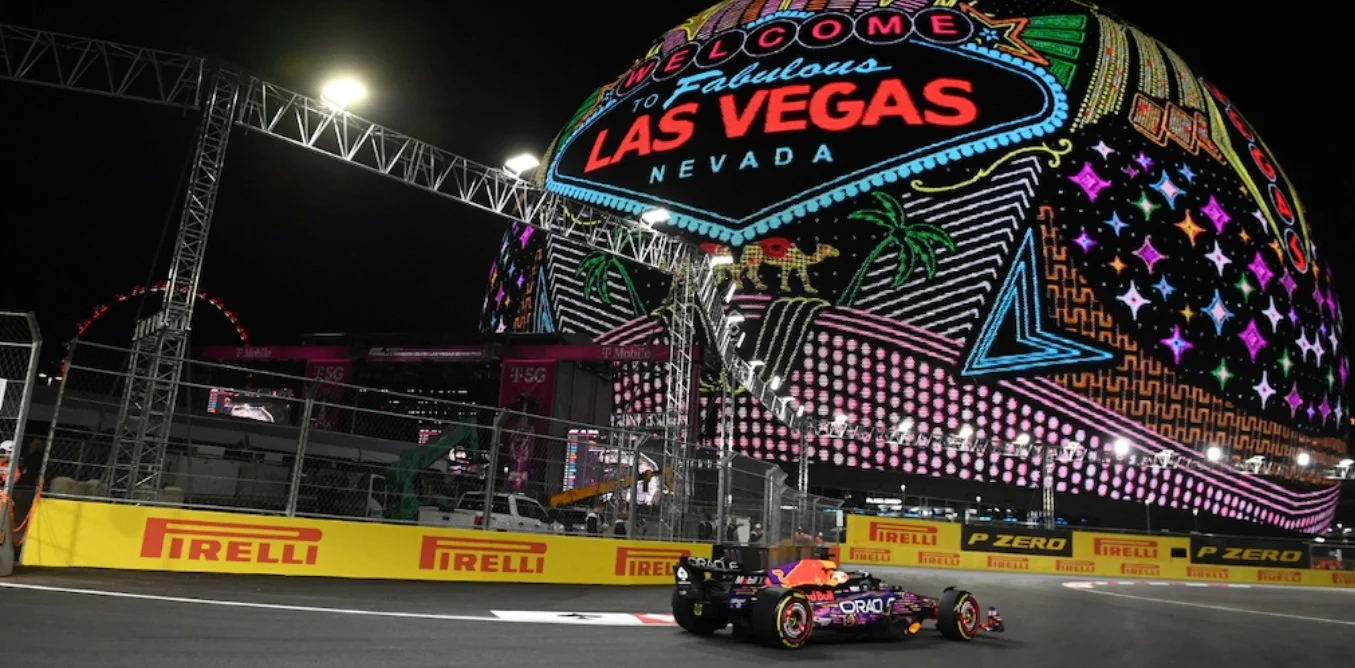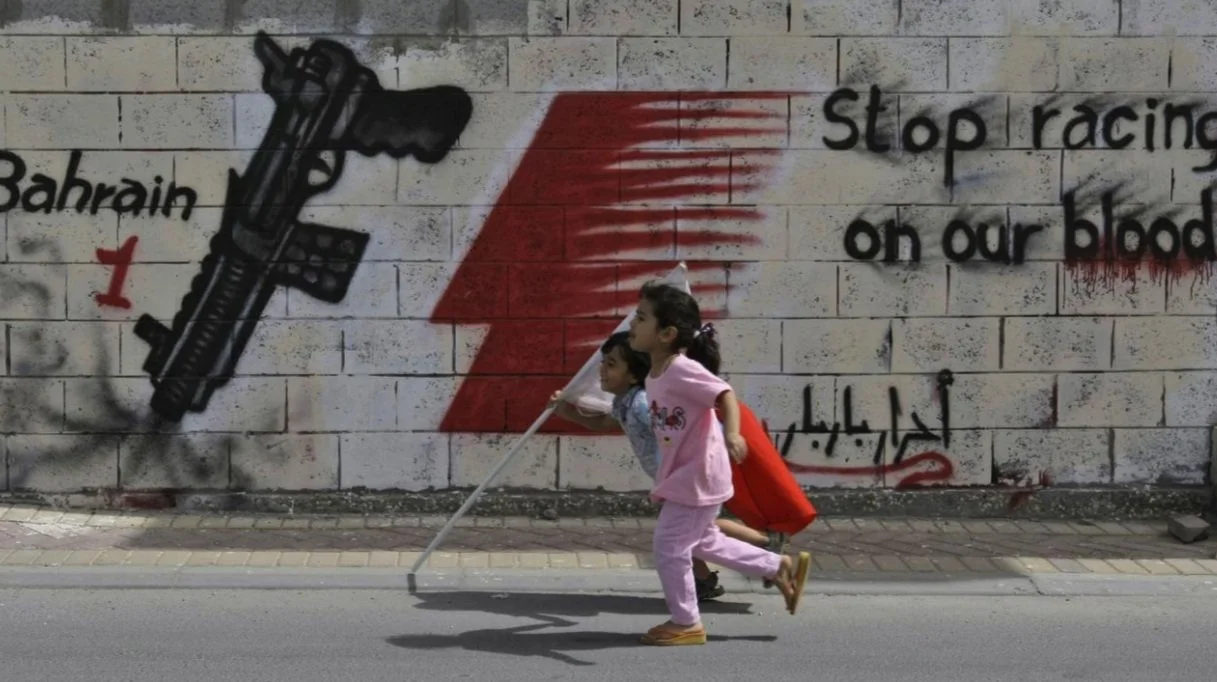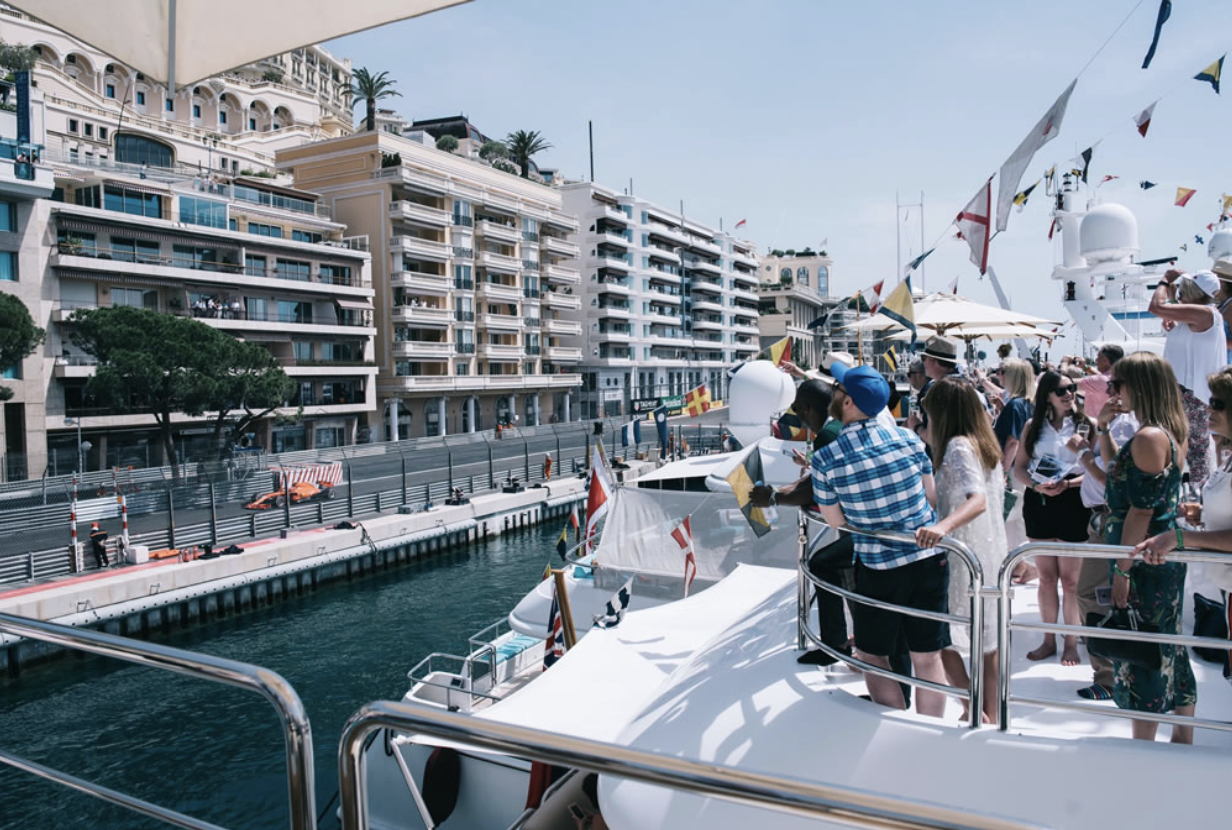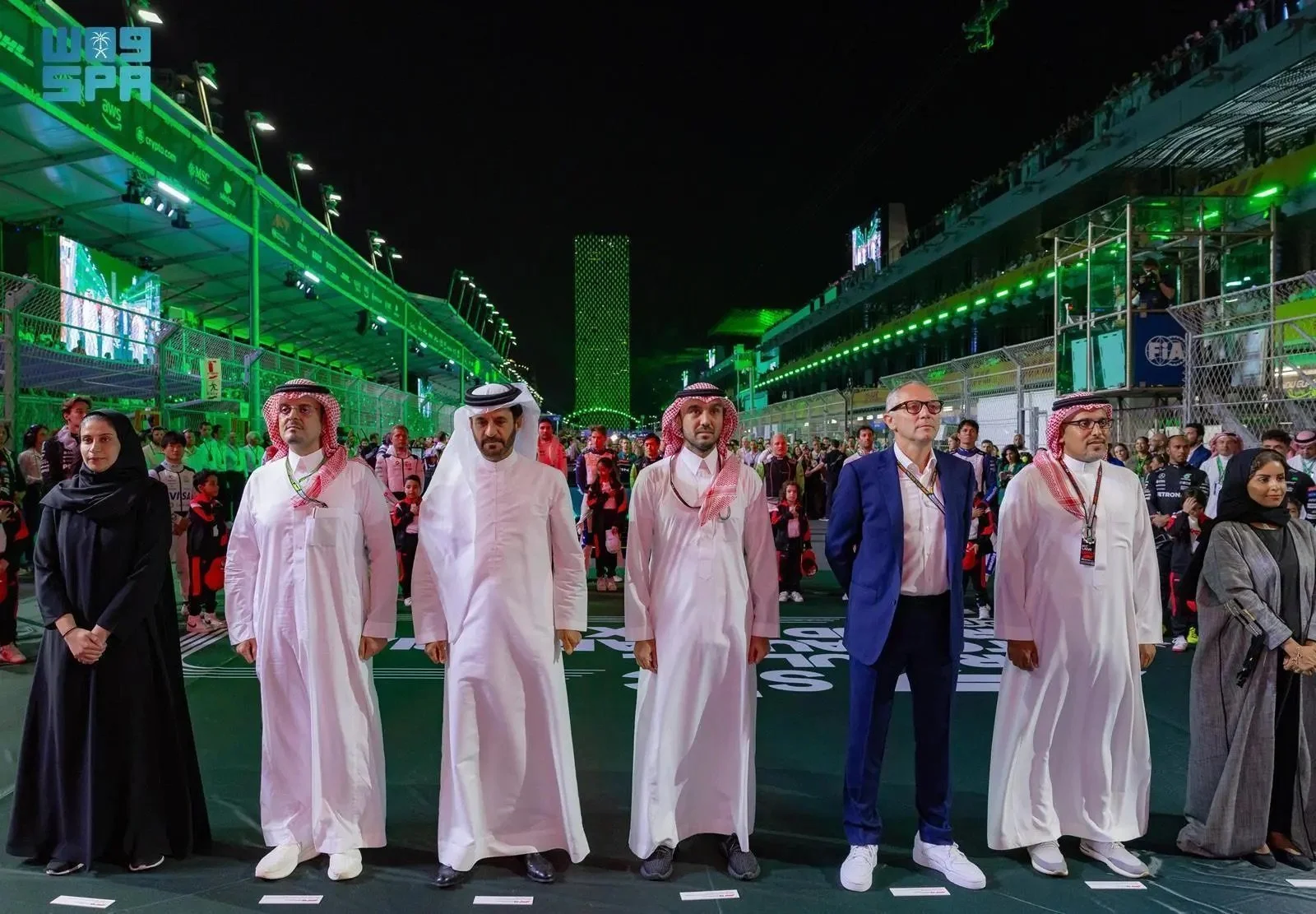Formula 1: The New Soft Power Engine
From Racing to Nation Branding
Under the lights of the Las Vegas strip, Formula 1 has never looked less like a race and more like a diplomatic summit in disguise. Heads of state brush shoulders with tech billionaires. Saudi royalty sip champagne with American celebrities. What was once a Eurocentric engineering sport has quietly transformed into a billion-dollar stage for national branding, where every circuit is both a race and a message. In the 21st century, soft power isn’t projected through summits and speeches. It’s sold through spectacles. And Formula 1 has become one of its most valuable assets.When Liberty Media acquired Formula 1 in 2017, they didn’t just buy a racing league, they bought untapped global IP. The old F1 was insulated, engineering-obsessed, and largely European. Its biggest stars were drivers, and its biggest headlines were lap times. But Liberty saw something different: a traveling circus with built-in scarcity, international appeal, and enormous cultural capital potential.
When Liberty Media acquired Formula 1 in 2017, they didn’t just buy a racing league, they bought untapped global IP. The old F1 was insulated, engineering-obsessed, and largely European. Its biggest stars were drivers, and its biggest headlines were lap times. But Liberty saw something different: a traveling circus with built-in scarcity, international appeal, and enormous cultural capital potential.
The strategy was clear: pull Formula 1 into the mainstream. That meant loosening the sport’s tightly wound traditions, opening up team radios and behind-the-scenes drama (Drive to Survive by Netflix), and selling not just competition, but a story. Suddenly, F1 was less about who could shave milliseconds off a lap and more about who could control the story. But beneath the streaming deals and social media growth was something even more valuable. And that was the demand. Hosting a Grand Prix wasn’t just a sporting event, it became a statement of national relevance. Countries weren’t buying races, they were buying a place on the global stage. And Liberty, unlike F1’s previous owners, was more than happy to meet the highest bidder.
The Middle East Strategy: Sportswashing and Soft Power?
No region has weaponized Formula 1’s global stage quite like the Middle East. In less than a decade, countries like Saudi Arabia, Qatar, and the UAE have poured billions into state-of-the-art circuits, luxury hospitality, and news-breaking contracts. Not simply for the love of racing, but for what the spectacle represents.
The Jeddah Corniche Circuit shoots through Saudi Arabia’s glossy waterfront, framed by cranes and luxury hotels that didn’t exist a few years ago. Qatar’s Lusail Circuit, once a motorcycle racing outpost, has been upgraded into a global showcase of the country’s swelling ambition. And in Abu Dhabi, the Yas Marina Grand Prix has become the annual conclusion of the F1 calendar, a desert jewel where Western celebrities, state officials, and oil billionaires orbit in the same floodlights.
The motivations are layered. On one level, these races slot neatly into sweeping national modernization agendas (Saudi’s Vision 2030, Qatar National Vision 2030) designed to diversify economies, attract tourism, and signal openness to the world. But on another, more tactical level, they serve as image resets. Formula 1 offers a kind of global legitimacy money alone can’t buy: association with elite sport, innovation, luxury, and cultural sophistication.
Of course, the spotlight comes with scrutiny. Human rights groups have criticized these deals as thinly concealed "sportswashing," designed to disguise reputations rather than reform them. But as celebrities keep showing up, as broadcast rights expand, and as the F1 calendar continues to bend toward these high-paying hosts, the moral debate has often been drowned out.
The American Entry: Reverse Cultural Imperialism
For decades, Formula 1 couldn’t crack America. NASCAR dominated the South, IndyCar owned the oval tracks, and F1 remained a European spectacle with brief, forgettable stopovers. But now, America isn’t just part of the calendar, it’s becoming the calendar.
Austin was the proof of concept. Miami turned up the volume. Las Vegas blew the doors off. Three races on U.S. soil, each louder, with more glitz and glamour, and more commercially ambitious than the last, mark F1’s most successful expansion into a market that once barely noticed it existed.
Lewis Hamilton with NBA legend (and arguable GOAT) Michael Jordan
What makes the American entry unique is that F1 arrives not as a cultural export, but as a high-end import. This isn’t the NFL forcing London games or MLB going to Tokyo, it's a European-rooted sport being absorbed into America’s entertainment-industrial complex on American terms. Formula 1 became a VIP experience as much as a sporting event, a tri-annual Super Bowl for the ultra-wealthy and globally connected.
David Beckham and the redbull team
For cities, hosting a Grand Prix is treated like landing an Olympics or World Expo, only without the one-time expiration date. The prestige brings in luxury tourism, corporate sponsors, tech investors, and global media coverage that money can’t replicate. States and municipalities don’t just want the race, they want what the race signals: modernity, relevance, and inclusion in the highest tiers of global extravagance.
Where Europe gave F1 its legacy, America gave it scale.
The Global Calendar: Bidding for Relevance
With only 24 slots on the calendar, Formula 1 has become one of the world’s most exclusive and expensive pieces of real estate. Countries aren’t just competing on the track, they’re competing for a place on the calendar itself. Each new Grand Prix represents a national investment in soft power, and increasingly, the competition to host is every bit as cutthroat as the racing.
The rise of "destination grands prix" has shifted the economic balance. Newer hosts, flush with state-backed funds, are willing to pay premium sanctioning fees, often north of $50 million per year, to secure a race. For them, it’s not about ticket sales or TV ratings. It’s about visibility, relevance, and aligning their national brand with F1’s growing global cachet.
As the calendar expands eastward and into the Middle East, legacy circuits have found themselves under pressure. Monaco, once untouchable, has had to renegotiate its status. Spa and Monza, pillars of F1’s European heart, face uncertain futures as newer markets offer Liberty Media richer deals, better infrastructure promises, and more pliable political partnerships.
Formula 1 is now a limited-supply commodity. Its scarcity fuels demand, and its growing geopolitical weight has turned each Grand Prix into a soft power bidding war, where history matters less than the size of the check.
The Risk Curve: Can the Center Hold?
For all its newfound power, Formula 1 now faces the same problem that haunts any product chasing global scale: what happens when ambition outpaces identity?
The calendar is swelling, the paddock more polished, the optic more cinematic. But in that expansion something essential risks being lost. As more governments line up with open checkbooks, the calendar strains under the weight of expansion. Purists worry that the core of F1, competition rooted in legacy, rivalry, and engineering excellence, is being traded for photo ops, political theater, and commercial excess. The balance between sport and spectacle is tilting fast. And increasingly, the spectacle is winning.
Fan discontent is no longer just a murmur on Reddit threads or niche forums; it’s becoming structural. Ticket prices for races have surged past affordability, with general admission passes rivaling luxury music festivals. Access is narrowing. Longtime fans are priced out not just of the grandstands, but of the sport’s cultural conversation. Meanwhile, younger viewers brought in through Drive to Survive are sometimes alienated by the sport’s actual complexity: the points systems, the pit strategies, the aero upgrades that don’t fit neatly into a three-act arc. F1 is being torn between two identities: a highly technical motorsport for obsessives, and a prestige streaming property optimized for social engagement.
That tension extends to the grid itself. There’s a growing sense that driver development and team success are becoming less about meritocracy and more about marketability. Legacy teams struggle to keep up with state-backed operations. Young talent is often judged as much by personal branding as by lap times. It’s not just about who’s fastest, it’s about who looks good doing it, and who can sell the right narrative.
And then there's the geopolitical volatility. The more F1 entangles itself with state ambitions, the more exposed it becomes to the unpredictability of politics. The China Grand Prix was suspended for a time amid ongoing diplomatic tensions. A long-discussed return to South Africa is perpetually stalled, not due to lack of interest, but due to fragile negotiations over rights, optics, and infrastructure. Even within active races, there's discomfort: criticism of human rights records in host countries, conflicts between drivers and sponsors, and increasing scrutiny of F1’s complicity in nationalist image-making.
The Quiet Superpower
In a world where influence is often measured in summits, sanctions, and soundbites, Formula 1 operates on a different frequency. Faster than diplomacy, sexier than trade deals, and far more scalable than one-off global summits, the sport offers nations a recurring, glossy platform to project power, all under the cover of entertainment.
Every Grand Prix weekend is a masterclass in 21st-century statecraft: engineered spectacle, curated access, and narrative control broadcast to hundreds of millions. It’s not just racing anymore, it’s an engine of influence, where lap times are almost secondary to the geopolitical choreography playing out behind the scenes.
Formula 1 has found itself in an unlikely role: the quiet superpower, accelerating at 200 miles per hour, and reshaping the map of global soft power one circuit at a time.








